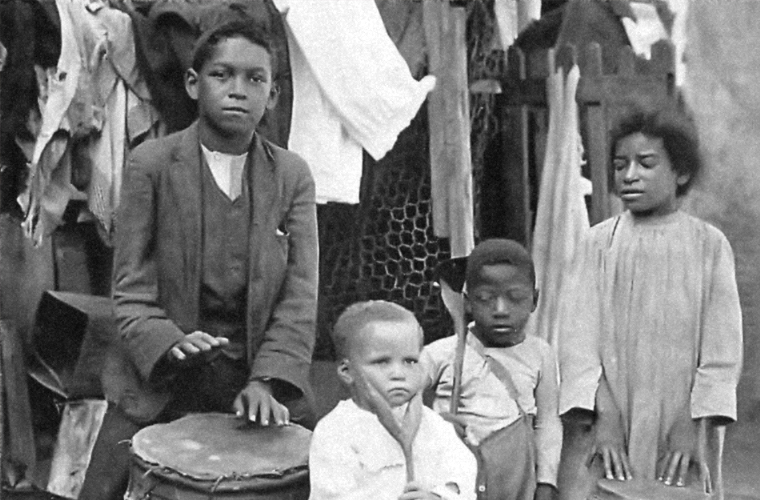The history of the world can never be told completely without giving concise and credible accounts of slavery of Africans. Over 50 million Africans were taken into slavery in America and Europe, while over 12.5 million were taken into slavery in the Arab world.
Of the over 50 million that survived the “middle passage” on ships to America and Europe, tens of millions of them found themselves in Brazil. Today, it is a known fact that roughly half of Brazil can trace their lineage directly to Africa.
But the same cannot be said for Brazil’s neighbor, which is Argentina. Just like Brazil, hundreds of thousands of African slaves were sold and taken to Argentina, at the time. Yet, the African presence in Argentina has virtually vanished from the country’s records, oral history, and consciousness.
According to historical accounts, Africans first arrived in Argentina in the late 16th century. They were dumped and sold in the region now called the Rio de la Plata, which includes Buenos Aires. Primarily, just like the African slaves in America, they worked in plantations and as domestic servants.
By the late 18th century and early 19th century, black Africans were numerous in parts of Argentina, accounting for up to half the population in some provinces, including Santiago del Estero, Catamarca, Salta, and Córdoba.
The neighborhoods of Monserrat and San Telmo, in Buenos Aires, housed many African slaves. The African slaves accounted for an estimated one-third of the city’s population. This was according to surveys taken in the early 1800s.
Although slavery was abolished in 1813, many parts of North, Central, Latin and South America, still practiced slavery till 1853. At this point, slaves were now free to live their lives and chase their destinies. But what was weird was that their numbers started to decrease drastically.
This decrease in the number and mass disappearance of Africans was attributed to two major factors by historians. One was the deadly war against Paraguay from 1865-1870, in which thousands of Afro-Argentines fought on the frontlines for the Argentine military. The second reason was the onset of yellow fever in Buenos Aires in 1871.
There were heavy casualties of Africans, who were used in the frontlines. This resulted in thousands of them dying, for another man’s war – for a war they knew nothing of. And subsequently, this death of so many African men left a huge gender gap among the African population.
This was a very trying time for the African community. More African women were made to marry and mate white Argentines, and this diluted the color and genes of the Africans who remained. And this was to be continued over the decades, to completely dilute African genes.
Because of the hostility, they were faced with in Argentina, many of the Africans fled to neighboring Brazil and Uruguay, which were considered more welcoming and conducive for Africans. There are those who have said that these were calculated by the white Argentines, so as to eliminate the huge traces of the Negro amongst them.
It has been alleged that the president of Argentina from 1868 to 1874, Domingo Faustino Sarmiento, sought to wipe out blacks from the country in a policy of covert genocide through extremely repressive policies. This included forcing the Africans to remain in neighborhoods where disease would decimate them with healthcare withdrawn from those areas.
The president’s seeming hate for the Africans could be captured in his Diary in 1848. He wrote: “In the United States… 4 million are black, and within 20 years will be 8 [million]…. What is [to be] done with such blacks, hated by the white race? Slavery is a parasite that the vegetation of English colonization has left attached to leafy tree of freedom.”
By 1895, the government of Argentina did not bother registering African-descended people in the national census, because they were so few in number.
It would not be an overstatement to say that the Argentinians wanted to eat their cake and have it. They wanted to use Africans for labor in building their country but didn’t want them to share in the country they helped built with blood and sweat.
It was certain that the white Argentinians saw a future were Africans would share equal rights with them in all facets of society. And they couldn’t live to see that happen. So, something had to be done. They had to reduce the Africans to the lowest number possible.
The CIA World Factbook currently notes that Argentina is 97 percent white (primarily comprising people descended from Spanish and Italian immigrants), thereby making it the “whitest” nation in Latin America.
But one fact that still remains is that Afro-Argentines did not completely vanish from Argentina, despite the attempts by successive governments to eliminate them. Somehow, they remain a hidden and hardly talked about part of Argentina.
“There is a silence about the participation of Afro-Argentines in the history and building of Argentina – A silence about the enslavement and poverty,” said Paula Brufman, an Argentine law student and researcher, according to Planete Afrique.
But ironically, Argentina’s most famous and celebrated cultural gift to the world, which is the tango, came from African influence. Deep down, they know it, and no amount of racial dilution can steal that fact from history.
Till today, there continues to be a significant presence of Afro-Argentines in Argentina. And it is for them that this knowledge must be spread. It is also important for black people worldwide to have this knowledge in their arsenal; for without the knowledge of our history, we can’t fully solve the problems that bedevil us due to our interactions with the colonizers of this world.

